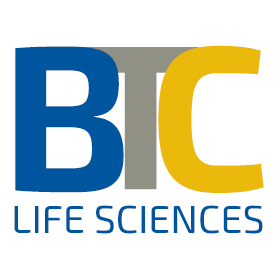Malfunction in spermatogenesis
Bonn researchers uncover contribution of Cylicin proteins to male fertility
For successful fertilization, sperm should move forward rapidly and be shaped correctly. The unique structure of the sperm cells forms during spermiogenesis. Now, researchers from the University Hospital Bonn (UKB) and the Transdisciplinary Research Unit “Life & Health” at the University of Bonn have found that fertility problems in both mice and humans can be caused by loss of so-called cylicines. This causes defects in head and tail structure of sperm. The results of the study have now been published in the scientific journal “eLife”.
During spermiogenesis, round immature cells in the testes develop into mature sperm with a head and tail. At the front of the sperm head, which carries the genetic material, is the acrosome; a structure required to cross the protective layer around the egg during fertilization. The sperm tail allows the cell to actively reach the egg. The shape of the sperm is unique and the cytoskeleton contains special proteins found only in sperm cells. This cytoskeleton ensures the stable connection of the individual parts of the sperm. In the area of the sperm head there is the perinuclear theca (PT) which is a cytoskeletal structure surrounding the sperm head. In this PT Cylicin 1 and Cylicin 2 are located. The role of these proteins had not yet been investigated.
“Since cylicins are very similar in mice and humans, our study in mice also allows us to find out more about human sperm development,” says corresponding author Prof. Hubert Schorle from the Institute of Pathology at UKB, who is also a member of the Transdisciplinary Research Area (TRA) “Life & Health” at the University of Bonn. “We hoped to gain insights into the complex network of factors that control sperm development and thus also male fertility.” To find out where cylicins are needed in spermiogenesis, Prof. Schorle’s research group created and studied mice that can no longer produce Cylicin 1 and respectively or Cylicin 2. […]
Participating Core Facilities: The Gene Editing Core Facility was directly involved in this study. Furthermore, the authors acknowledge the support from the Analytical Proteomics and Microscopy Core Facilities.
Participating institutions and funding:
Bonn Technology Campus, Core Facility ‘Gene-Editing’, Medical Faculty, University of Bonn, Bonn, Germany
Institute for Cell Biology, University of Bonn, Bonn, Germany
Institute of Innate Immunity, Biophysical Imaging, Medical Faculty, University of Bonn, Bonn, Germany
Institute of Pathology, Department of Developmental Pathology, Medical Faculty, University of Bonn, Bonn, Germany
Centre of Reproductive Medicine and Andrology, University Hospital Münster, University of Münster, Münster, Germany
Institute of Reproductive Genetics, University of Münster, Münster, Germany
This study was supported by grants from the Deutsche Forschungsgemeinschaft (SCHO 503/23-1, SCHN 1668/1-1, CRU326).
Publication: S. Schneider et al: Cylicins are a structural component of the sperm calyx being indispensable for male fertility in mice and humans; eLife; DOI: https://doi.org/10.7554/eLife.86100.3







